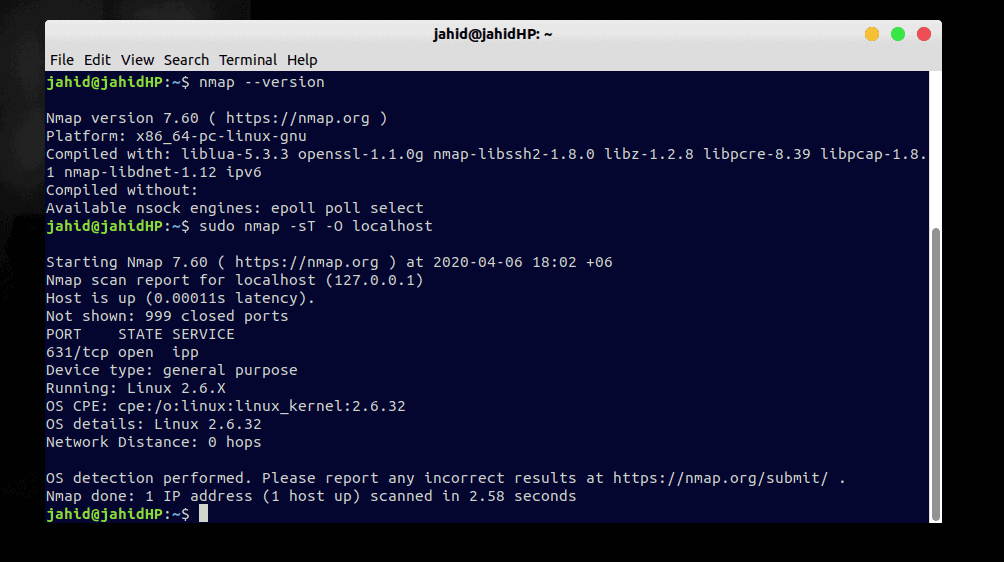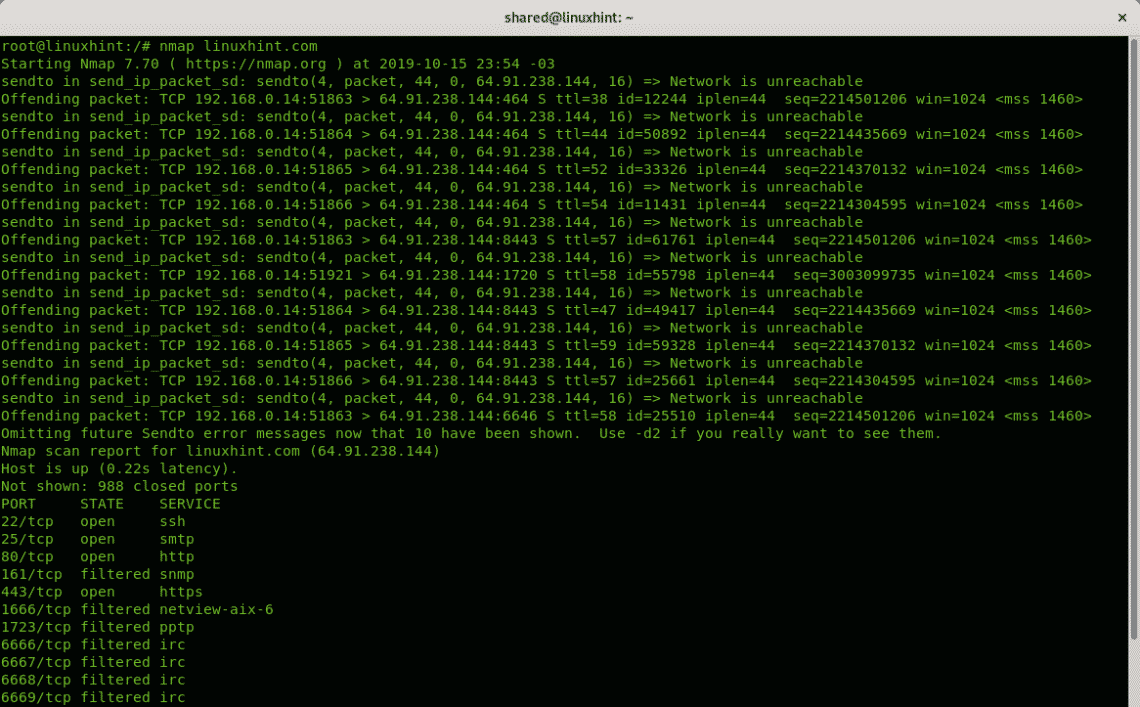
- MAC OS LIST OPEN PORTS LSOF FOR MAC
- MAC OS LIST OPEN PORTS LSOF MAC OS X
- MAC OS LIST OPEN PORTS LSOF SERIAL
- MAC OS LIST OPEN PORTS LSOF DRIVER
- MAC OS LIST OPEN PORTS LSOF SERIES
MAC OS LIST OPEN PORTS LSOF DRIVER
Of the two, I found the open source PL2303 driver to be slow and observed occasional data corruption (I did not try the closed source driver but heard worse things).
MAC OS LIST OPEN PORTS LSOF SERIES
For instance, two common chips include the FTDI series (official driver here) and the Prolific PL2303 chipset (open source driver here, closed source driver here). Given variability in driver quality and compatibility, you may want to try a few models and driver implementation.
MAC OS LIST OPEN PORTS LSOF SERIAL
You probably want a USB to serial converter, of which there are a variety. The first step is to get an RS232 serial port on your Mac, which hasn't been built-in for a long, long time. Apple II to Mac intelligent serial terminal file transfers.
MAC OS LIST OPEN PORTS LSOF FOR MAC
N.E.R.D.: USB-to-Serial console for Mac (OSX). using getty with serial port consoles. MAC OS LIST OPEN PORTS LSOF MAC OS X
Use a Serial Console with Mac OS X Leopard - The UNIX and Linux Forums. Use an old serial VT100 terminal with OS X - Mac OS X Hints. The technique described here has been reported to work at least as recently as 10.10.4.įor completeness, here are some links to several of the sites I encountered, which should give you the basic idea of the problem: I was working with 10.6, non-server edition. People have generally had more success with the Xserve OS X server versions. Many were quite old, and it appears that the process has gotten more difficult with more recent versions of OS X (at least Snow Leopard 10.5+). I first tried googling around, and I encountered a few references to this issue on various Mac forums. One of two things is generally meant by this, either using a Mac as the interface to a serial device (accomplished by running a terminal emulator program on the Mac), or using another machine to connect to the Mac over serial and accessing the shell provided by the Mac. In this example, the 1st line exhibits a connexion from my Mac towardġ7.172.233.109, which a further: whois 17. up a Serial Console in Mac OS X Setting up a Serial Console in Mac OS X To see both servers listening, and connections already established in both directions. …without any added filtering, so as to get the correct headers, and Tcp4 0 0 localhost.773 localhost.63173 ESTABLISHED Tcp4 0 0 localhost.63173 localhost.773 ESTABLISHED Tcp4 87 0 my_iMac_at_home.63429 .http ESTABLISHED Tcp4 58 0 my_iMac_at_home.63452 .http ESTABLISHED Tcp4 116 0 my_iMac_at_home.55478 .http ESTABLISHED Tcp4 87 0 my_iMac_at_home.55481 .http ESTABLISHED Proto Recv-Q Send-Q Local Address Foreign Address (state) The simplest method is to use netstat: $ netstat -ap tcpĪctive Internet connections (including servers) pid: 71 name: /Applications/Pritunl.app/Contents/Resources/pritunl-service Proto: tcp4 addr.port: *.58640 pid: 320 name: /usr/libexec/rapportd Proto: tcp6 addr.port: *.58640 pid: 320 name: /usr/libexec/rapportd pid: 67931 name: /Applications/electerm.app/Contents/Frameworks/electerm Helper.app/Contents/MacOS/electerm Helper pid: 70043 name: /Applications/IntelliJ IDEA.app/Contents/jdk/Contents/Home/jre/bin/java Proto: tcp4 addr.port: 127.0.2 pid: 70043 name: /Applications/IntelliJ IDEA.app/Contents/jdk/Contents/Home/jre/bin/java Proto: tcp4 addr.port: 127.0.3 pid: 70043 name: /Applications/IntelliJ IDEA.app/Contents/jdk/Contents/Home/jre/bin/java Proto: tcp4 addr.port: 127.0.9 pid: 70065 name: /Applications/IntelliJ IDEA.app/Contents/jdk/Contents/Home/jre/bin/java 
Proto: tcp46 addr.port: *.61992 pid: 70065 name: /Applications/IntelliJ IDEA.app/Contents/jdk/Contents/Home/jre/bin/java Proto: tcp4 addr.port: *.61993 pid: 70043 name: /Applications/IntelliJ IDEA.app/Contents/MacOS/idea Proto: tcp46 addr.port: *.62085 pid: 70078 name: /Library/Java/JavaVirtualMachines/jdk1.8.0_162.jdk/Contents/Home/bin/java Proto: tcp46 addr.port: *.62070 pid: 70078 name: /Library/Java/JavaVirtualMachines/jdk1.8.0_162.jdk/Contents/Home/bin/java Proto: tcp46 addr.port: *.62087 pid: 70078 name: /Library/Java/JavaVirtualMachines/jdk1.8.0_162.jdk/Contents/Home/bin/java Proto: tcp46 addr.port: *.35729 pid: 70078 name: /Library/Java/JavaVirtualMachines/jdk1.8.0_162.jdk/Contents/Home/bin/java pid: 70078 name: /Library/Java/JavaVirtualMachines/jdk1.8.0_162.jdk/Contents/Home/bin/java It'd be interesting to see other opportunities to make this nicer/slimmer. I have a small collection of these convenience functions in a file that I source from ~/.bash_profile, or ~/.zshrc. So, this is what I quick put together: netstat -Watnlv | grep LISTEN | awk '' | column -t -s "|"

I read other questions/answers offering lsof* and netstat* on MacOS, and I still wanted something with more compact output.

:max_bytes(150000):strip_icc()/lsof-610e40a2b6684b2fb04d8d2fa3aec1ed.jpg)
First, I'm not a BSD expert, but like the OP I wanted the rough equivalent of running the following on a *nix box, or something close: netstat -tulpn





:max_bytes(150000):strip_icc()/lsof-610e40a2b6684b2fb04d8d2fa3aec1ed.jpg)


 0 kommentar(er)
0 kommentar(er)
